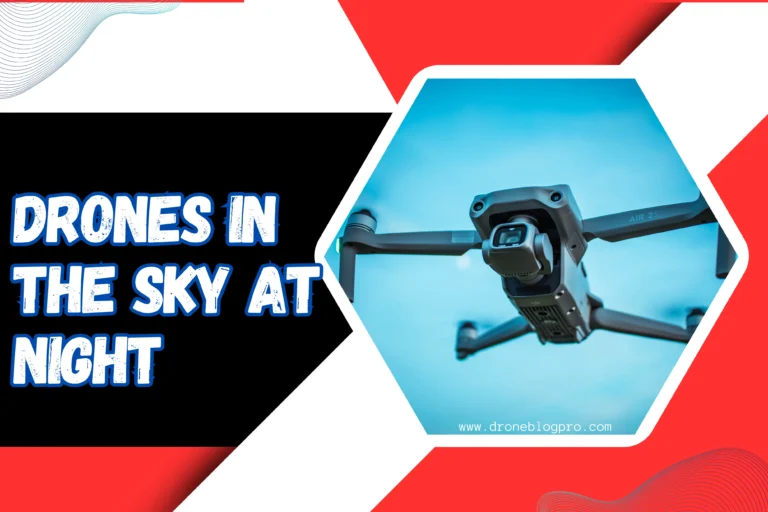What Is Level 5 Wind Resistance for Drones? Did you realize that flying a drone in severe winds increases the risk of crashing or losing it? Drone wind resistance levels are critical for determining whether the drone can operate safely in a particular area.
Imagine steering your ship across a tumultuous sea, with unrelenting waves pushing you off course. This is similar to your drone’s difficulties while flying against severe winds. You’re probably wondering what wind resistance is and what ‘level 5’ means. Wind resistance is the counterforce imparted on air by any item moving through it, including drones.
A level 5 wind resistance indicates that your drone can survive gusts of up to 29-38 km per hour while being stable and controllable, similar to a robust ship braving a stormy sea. It is critical to guarantee safe and efficient flights, particularly in professional or outdoor applications with unpredictable weather.
In this post, we’ll look at how wind impacts your drone’s battery life, altitude hold capacity, and overall performance; which drones have level 5 wind resistance; the elements that influence this level; and how to estimate wind speed before a flight.
Key Learnings
- Level 5 wind resistance refers to a drone’s capacity to tolerate winds of 29-38 km per hour while remaining stable and controlled.
- A drone’s shape, surface roughness, and weight may all increase drag and impact its wind resistance.
- Drones use more energy while flying in heavy winds owing to increased power demand to maintain stability, therefore scheduling flights on less windy days or altering flight patterns to match prevailing winds will help preserve battery.
- Drone design improvements, better propeller designs, and sensor technologies all help to reduce energy consumption and improve wind resistance in high-wind environments.
How Drones Remain Stable Under Winds?
Level 5 wind resistance is the highest wind speed a drone can withstand without losing control. The higher the degree of resistance, the stronger your drone will be in headwinds.
To discover your drone’s level 5 wind resistance, check its specs. Suppose it states it has 6-axis gyroscope stabilization and an average flying length of 10 minutes (for example). In that case, we may conclude that this drone has level 3 wind resistance, or even better if it has a gimbal system with three-axis stabilization capabilities.
What Is Level 5 Wind Resistance For Drones?
Level 5 wind resistance for drones provides the highest possible capacity to tolerate wind speeds ranging from 19 to 24 miles per hour. Drones with this degree of resistance are designed to survive in very turbulent situations, assuring their endurance and protection against wind-related damage. Drones with level 5 wind resistance are often built with durable materials, which enhances their capacity to handle harsh, windy conditions.
Of course, nothing in our world is without constraints, including wind resistance. Wind Resistance Limitations include shape and surface roughness, increasing drag and negatively impacting performance.
So, the next time you see ‘Level 5’ in your research or purchases, remember that you are not just purchasing excellent technical requirements, but also joining a community that values safety and resilience in hard situations.
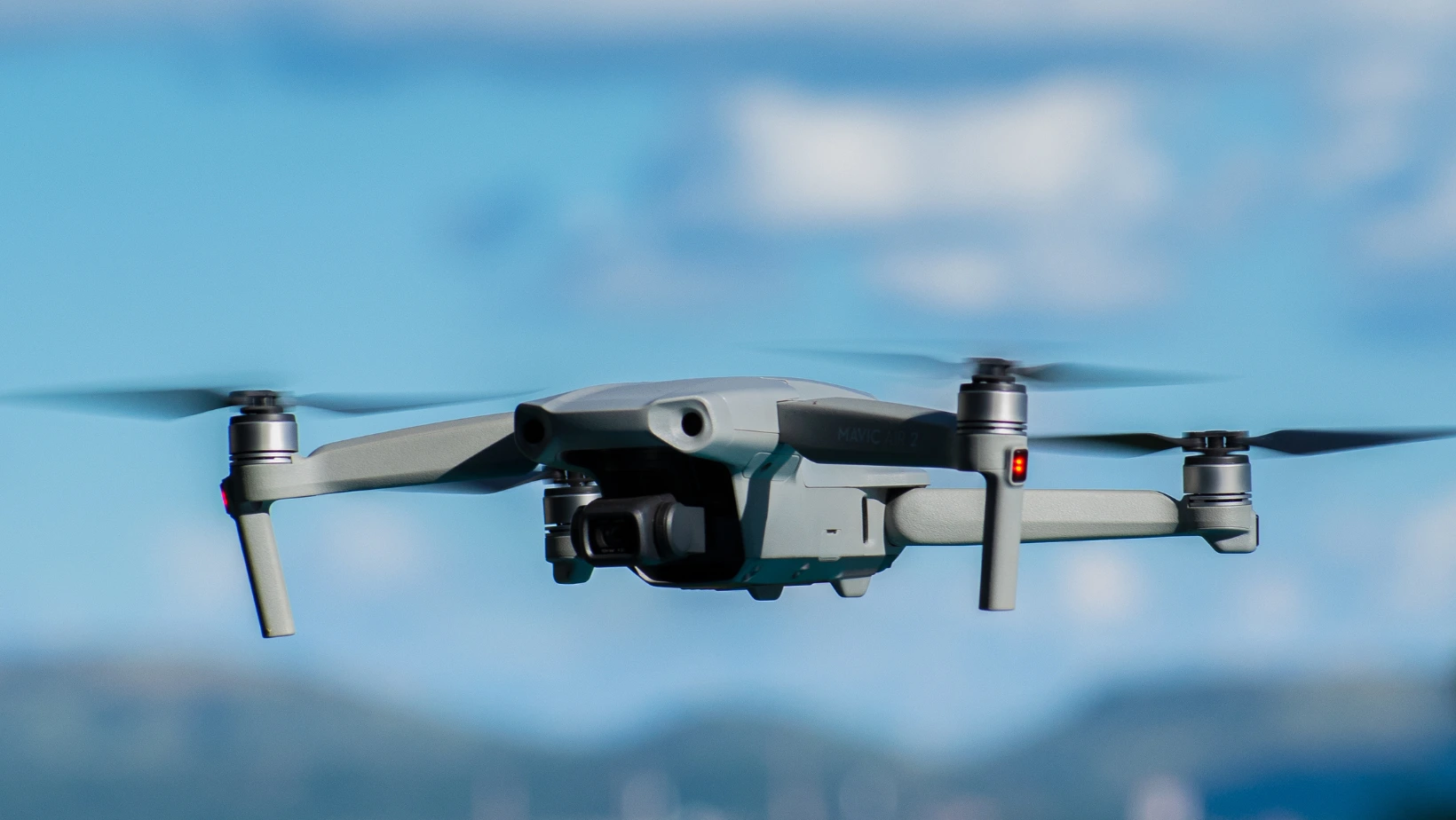
What Are Drone Resistance Levels?
A drone’s wind resistance level ranges from 0 to 12, indicating the maximum wind speed the drone can withstand.
For example, a drone with level 5 wind resistance performs better than a level 4 drone in windy weather.
The wind resistance of drones correlates to the Beaufort scale, which divides wind speed into 12 categories.
| Wind Resistance Level | Wind Speed | Indicators/effects |
|---|---|---|
| 0 | < 1 mph | Complete calmness |
| 1 | 1-3 mph | Can move smoke in wind direction |
| 2 | 4-7 mph | The wind fell on face, moved leaves |
| 3 | 8-12 mph | Moves leaves and twigs |
| 4 | 13-18 mph | Move dust off the ground |
| 5 | 19-24 mph | Move small trees |
| 6 | 25-31 mph | Sway large tree branches |
| 7 | 32-38 mph | Resistance to walking against the wind |
| 8 | 39-46 mph | Break twigs & small branches |
| 9 | 47-54 mph | Blow slate from rooftops |
| 10 | 55-63 mph | Break trees (a rare occurrence ) |
| 11 | 64-72 mph | Widespread damage (a rare occurrence) |
| 12 | > 73 mph | Destruction of structure(a rare occurrence) |
In 1794, Francis Beaufort devised a scale to assess the extent of ship damage caused by severe winds.
Today’s updated version of this scale, used to identify various degrees of wind intensity, considers wind speed to determine 12 distinct levels.
Drone Wind Resistance Level is a term commonly used by drone pilots and hobbyists to describe the severity of wind.
How Strong Wind Can Affect My Drone?
A powerful wind gust might knock your drone off course and cause erratic motions in both lateral directions.
Updrafts around big geographical features, such as mountain slopes and tall buildings, can cause an unexpected increase in height.
- If you fly below your specified wind resistance threshold, your drone can adapt to external pressures and swiftly restore its place. However, severe winds might damage or even cause your drone to crash.
- When flying in heavy winds, your drone has to work harder to keep up with and fight the high wind speed. This causes the motors to demand more current from the battery, which depletes it quicker. If there is a high wind, attempt to fly downdraft or in the same direction as the wind to save battery life.
- If you’re heading out for aerial photography, ensure the wind isn’t too strong to capture better, clearer photographs and movies. The ideal conditions for aerial photography are clear sky and no breeze.
- If the winds create a minor dust storm underneath the drone, it may be unable to keep its place.
In such a circumstance, you may encounter a failed RTH mode and need manual control to return your drone home. - Heavier drones perform better in windy circumstances than lightweight drones. A lightweight drone can be easily swept away by a strong wind.

How Strong Wind Can Affect Drone Battery?
Level 5 Wind Resistance for Drones: When confronted with heavier gusts, your drone’s battery will deplete faster. This is due to the higher power consumption required by the motors to maintain stability and offset the force of the wind. You should be aware that drone operations provide an inherent obstacle.
As part of a thorough wind effect analysis, it’s critical to understand how different wind speeds affect drone performance. Flying into a headwind increases power usage since your drone must work harder to fly forward. A tailwind, on the other hand, might help push your gadget and so use less power.
Don’t worry, however! You may still make your flying buddy last longer using battery conservation measures. For example, scheduling flights on less windy days or altering flight routes based on prevailing winds might alleviate this problem.
Drone design improvements are also important for controlling wind resistance. Energy consumption during high-wind situations is greatly reduced because of innovations including streamlined forms, propeller designs, and sophisticated control algorithms.
Remember that mastering these dynamics will lengthen your flight sessions and increase the longevity of your valuable device.
Of course, nothing in our world is without constraints, including wind resistance. Wind Resistance Limitations include shape and surface roughness, increasing drag and negatively impacting performance.
So, the next time you see ‘Level 5’ in your research or purchases, remember that you are not just purchasing excellent technical requirements, but also joining a community that values safety and resilience in hard situations.
How Drones Remain Stable in Strong Winds?
Are you concerned about your drone’s capacity to maintain altitude in windy conditions? This is a typical concern, especially when trying to get the perfect aerial photo or collect exact data. However, be assured that current drones are outfitted with superior wind tolerance technology and stabilization devices particularly intended to keep altitude even in heavy gusts.
Drones use their stabilization systems to balance against the force of the wind. These systems operate along with propellers and engines to maintain height. Wind-induced changes in position or movement are detected by the drone’s sensors, which include accelerometers and gyroscopes.
Altitude maintenance involves more than simply maintaining a constant height; it also entails keeping the drone stable while resisting the push and pull of turbulent weather conditions. Because of these technical improvements, there is no need to fear if some unanticipated winds begin to blow. Your drone has your back; being a member of this tech-savvy group means you can trust its skills!
Famous Drones With Level 5 Wind Resistance
Level 5 Wind Resistance for Drones: Consider the DJI Phantom 4 Pro, a sophisticated drone with a level 5 wind resistance; it can endure strong gusts and take steady footage even on a windy beach day. The drone’s endurance is outstanding, withstanding situations that other models may fail under. This is only one example of how manufacturers prioritize robustness in their designs.
| Drone Model | Manufacturer | Price |
|---|---|---|
| Autel Robotics Evo II Pro | Autel Robotics | $1,595 |
| Yuneec Typhoon H Pro | Yuneec International | $1,499 |
| DJI Mavic Air 2S | DJI Technology Co. Ltd. | $999 |
| Parrot Anafi FPV Pack Drone | Parrot SA | $799 |
What Factors Affect Drone Wind Resistance Level?
What Is Level 5 Wind Resistance for Drones? Numerous variables must be considered when choosing a drone capable of withstanding heavy winds.
Pay attention to the drone’s weight, size, and form, as these factors considerably influence its stability in windy situations.
The power or thrust of the drone’s motors and the complexity of its onboard sensors all impact its wind resistance.
Weight
The drone’s weight might significantly impact how severe winds affect you. Regarding weight management, having a larger body mass gives you more stability against strong winds. The more the mass, the greater the inertia – this is just physics.
Size
It’s not just how much you weigh, but also how much space you occupy – yeah, we’re talking about drone size. Drone size has a considerable influence on stability and poses specific flight issues. The bigger the size, the more wind resistance it will face. This can make keeping a consistent path challenging.
Shape
Believe it or not, the form of the drone has a big impact on flight. It is all about aerodynamic efficiency and form optimization.
Remember, becoming a member of this airborne community entails following these guidelines to overcome level 5 wind resistance!
Power/thrust
Moving on from the impact of form on wind resistance, let’s look at the function of power and thrust. Using the correct propulsive force is critical for effectively overcoming wind resistance.
Propeller design considerably impacts this equation; an effectively built propeller can cut through the air with little energy waste, enhancing engine efficiency.
Sensors
Sensors play a crucial role in overcoming wind resistance. Innovative sensors and sensor technologies are essential for precisely sensing and responding to wind forces. Sensor calibration is critical in this scenario.
Software
Diving into the software world is like traversing a sophisticated maze that allows drones to resist severe storms.
Software upgrades are critical in drone technology. They improve and repair faults, ensuring your drone can easily withstand level-5 winds.
Programming drones is not a simple process; it takes extensive knowledge and experience. The goal is to balance quickness and stability, allowing the drone to maintain its position even when confronted with severe gusts.
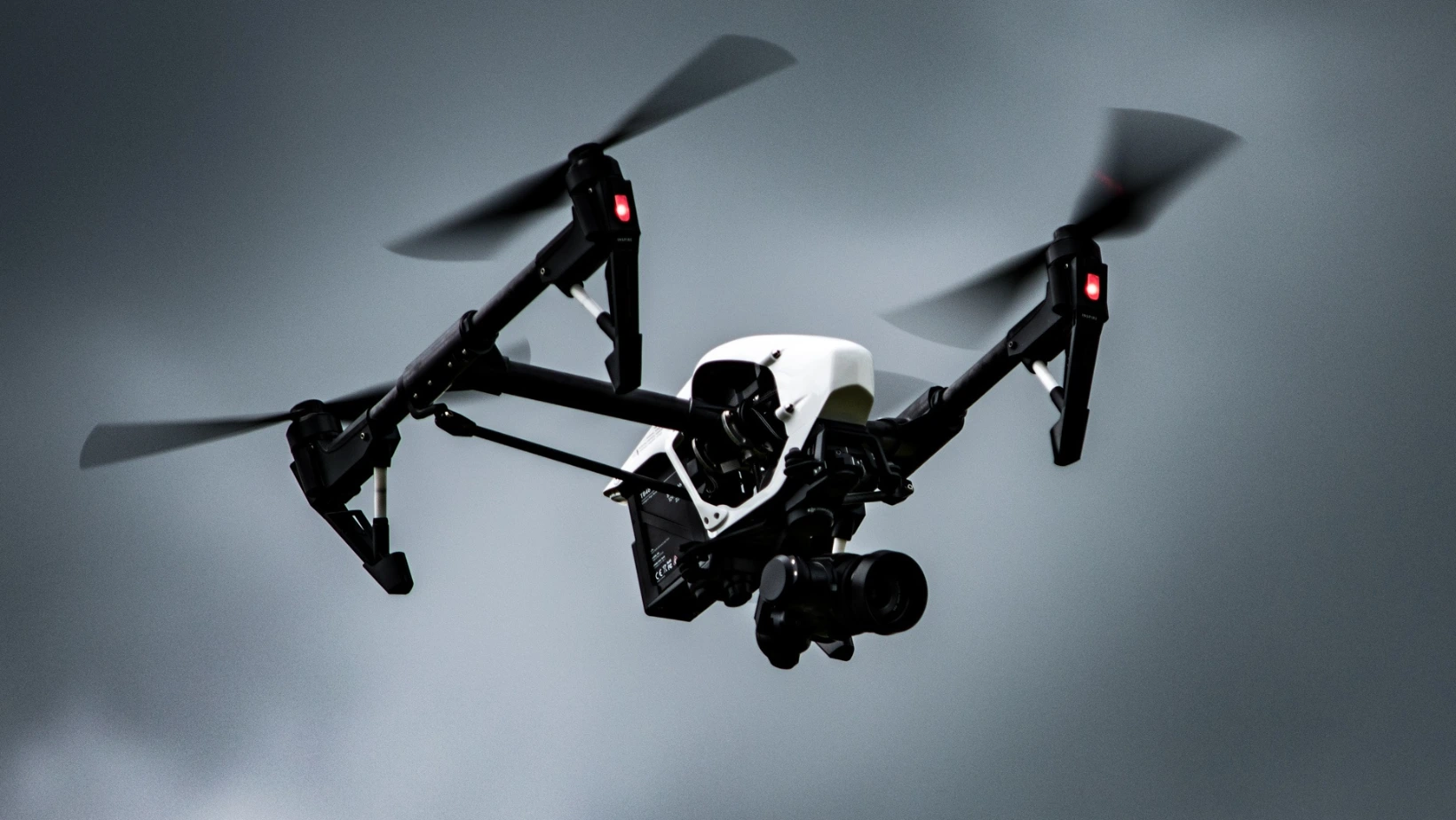
FAQs (What Is Level 5 Wind Resistance for Drones?)
What’s the best drone for strong wind resistance?
Select a drone with a Wind Resistance Level of 5 or higher to fly in heavy gusts. The majority of DJI drones have Level 5 wind resistance. The Autel Evo 1 and Evo 2 offer level 8 wind resistance.
How Do Drones Handle Wind?
First, ensure that your drone is wind-resistant. The drone’s design will help with this. For example, if the propellers are shielded by other body elements, they may take more flexing and bending without breaking.
What Is Drone Wind Resistance Levels?
Drone wind resistance levels are commonly used by drone operators to categorize the intensity of the wind.
- Level 0 – can perfectly calm
- Level 1 – can move smoke in the wind direction
- Level 2 – can move leaves and wind can touch the face
- Level 3 – can move leaves and twigs
- Level 4 – can move dust from the ground
- Level 5 – can move a small tree
- Level 6 – can sway big tree branches
- Level 7 – can resist walking against the wind
- Level 8 – can break small twigs and branches
- Level 9 – can blow slate from a rooftop
- Level 10 – can break a tree
- Level 11 – can cause widespread damage
- Level 12 – can cause damage to structures
Conclusion(Level 5 Wind Resistance for Drones)
What Is Level 5 Wind Resistance for Drones? Level 5 is the maximum level of wind resistance. A drone that can tolerate level 5 wind resistance can fly in extremely high and unexpected gusts, but it is also more expensive than drones with lesser wind resistance.
We hope this information was useful in your quest for a wind-resistant drone. It’s crucial to realize that just because a model claims to have level 5 or 6 wind resistance doesn’t imply it can withstand any blast of wind.
If you’re searching for a drone that can handle strong winds, check out our guide on how much wind pressure drones can take before breaking.
So you’ve understood the notion of wind resistance and what Level 5 wind resistance means for your drone.
You understand how severe winds may affect battery life and altitude hold, and you’re prepared to face those stormy days.
Remember to verify your drone’s wind resistance and speed before taking off. With this information, isn’t it time to let your drone soar high in the sky?
Read Also: What Are Top 6 Cheap Drones Without Geofencing in December 2023? Conclusive Review
Read Also: Why are there Drones in the Sky at Night in 2023? Latest Guide
Read Also: Why We Use Drones For Insurance Inspections? Latest Guide-2023

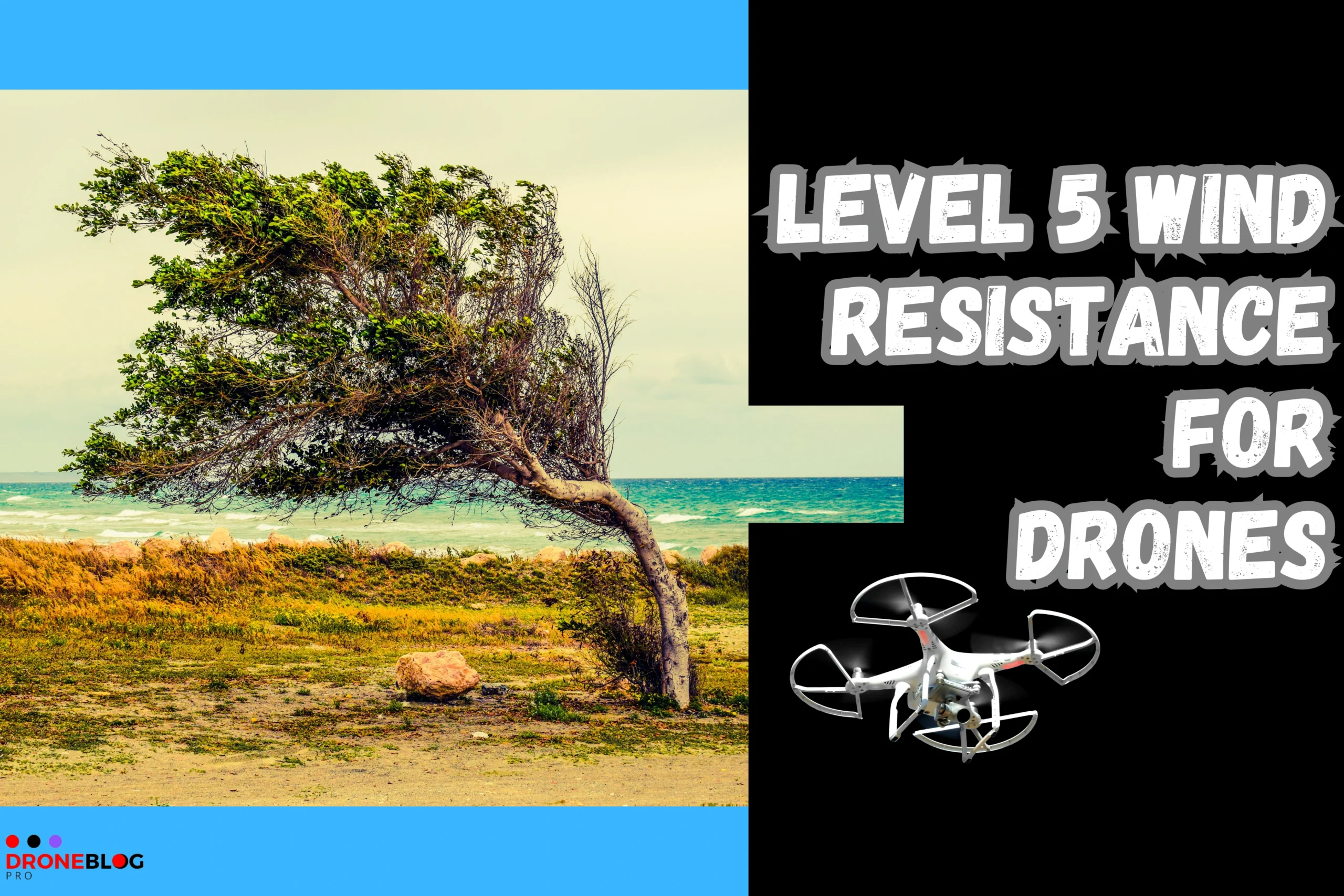
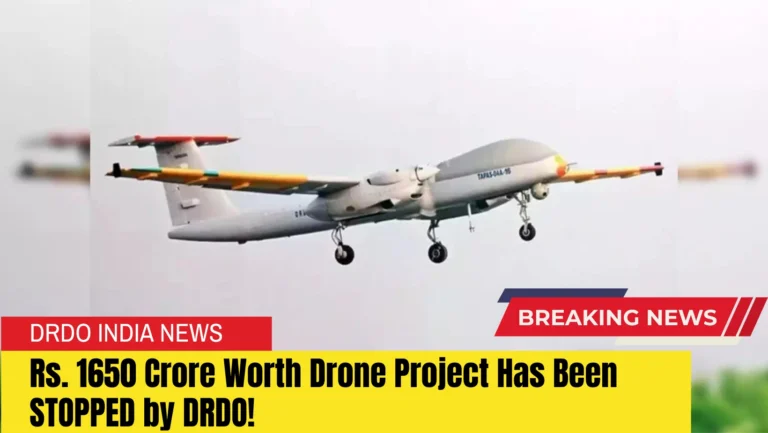
![How To Add Remote ID To Drone in 2024? [Latest Guide-2024]](https://droneblogpro.com/wp-content/uploads/2024/01/www.droneblogpro.com-6-768x512.webp)
![[FIXED] How To Reset DJI Drone Wi-Fi? Latest Guide-2024](https://droneblogpro.com/wp-content/uploads/2023/12/How-To-Reset-DJI-Drone-Wi-Fi-768x512.webp)
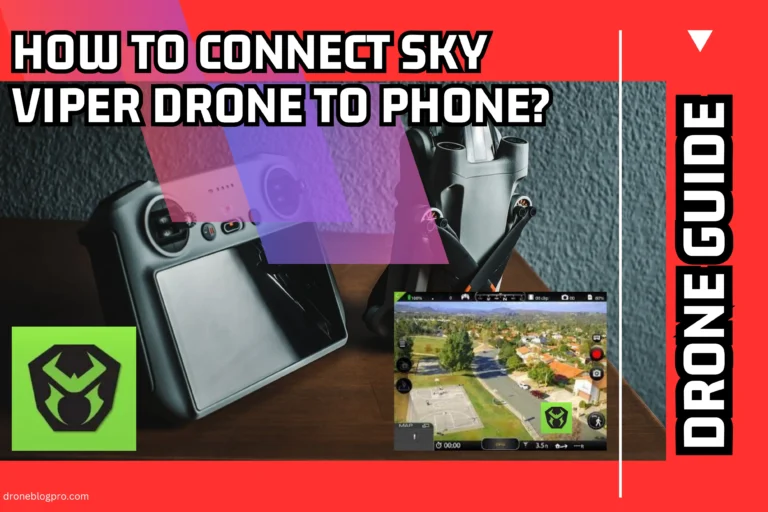
![How To Spot A Police Drone At Night? [Updated Guide 2024]](https://droneblogpro.com/wp-content/uploads/2023/12/Copy-of-Untitled-Design-768x512.webp)
